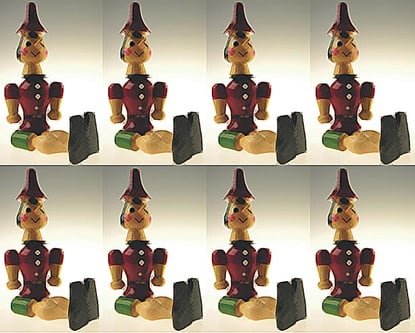In some business circles, it isn’t hard to pass off research results from focus groups as “substantial,” IF you know how to present them.
7 Ways to Lie with Focus Groups
Here are 7 fundamental lessons to lie with your focus group results when you present them:
1. Make Little Things Big
When you have very few responses because you conducted focus groups to save money when you really needed quantitative analysis, put only one quote – in very big type – on each page of your report. Doing this makes a single statement from one person in the focus groups look like a movement.
 2. Throw Some Numbers Around
2. Throw Some Numbers Around
Don’t let talking to only twenty-nine people in a few focus groups stand in the way of reporting quantitative research results. If ten people in your focus groups responded the same way, that means more than a third of the people you talked to share that perspective. Don’t hesitate to call it “34.5%” in the report. You worked hard for that number; you earned that number.
3. You Have to Have a Model
When you don’t have many insights, develop a very complex diagram and call it your “strategic model.” Shrink your strategic model to such a small size to fit on a page that it becomes illegible. This will minimize nearly any ability your audience has to ask (and your need to respond to) strategic questions about your complex diagram.
4. Make Details Small
Extend the illegible size strategy to any explanatory text. Other than the humongous quotes, make any other words a 6-point size so the explanatory text, along with your strategic model, are all illegible.
5. Consider Pictures to Be Worth a Thousand Words
Stock photos are underrated as rich sources of research insights. Make sure you use stock photos liberally (on the title page, to introduce new sections, to take the place of data) and in a large format to occupy space. Stock photos substitute for one thousand words of meaningful research results you weren’t able to deliver because you did the wrong type of research.
6. Symbolize the Results
When the conclusions you have derived from the research aren’t particularly meaningful, attach symbols to them in your report. The symbols make it seem as if your conclusions are so substantial they warranted the time investment to create a customized symbol for each one.
7. Don't Show Everything or Say How Much "Everything" Is
Make repeated references to a boatload of material from the focus groups you didn’t include in the final report. It will make everyone feel good to believe there’s something more to the research without having to actually read anything with more detail.
I'm Kidding
Yes, I’m kidding about doing these things.
Don’t do them.
But don’t be surprised when you’re presented a research report that DOES do them. Some “researchers” lie with charts (affiliate link), but they also lie with pictures, fonts, and words as well. Be on the lookout, and start asking questions, even if what’s on the page is so small you can hardly read it. - Mike Brown
If you enjoyed this article, subscribe to the free Brainzooming email updates.
The Brainzooming Group helps make smart organizations more successful by rapidly expanding their strategic options and creating innovative plans they can efficiently implement. Email us at info@brainzooming.com or call us at 816-509-5320 to learn how we can help you enhance your strategy and implementation efforts.



